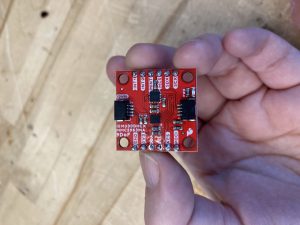This week the goal was to get the FPGA programmed to be able to receive the sensor data from the IMU as well as be able to output a signal such that the motors are driven. I was working with the PYNQ environment and had some trouble getting the environment set up. Eventually, though, I was able to get the PYNQ environment working, but I still had problems getting the sensor data. There is nothing showing up in the place where I expect the data to be. I wasn’t able to debug it for too long because I left for spring break early.
The progress is behind because our team wanted to get the goals of reading the IMU data and outputting a PWM signal to the motors done, but we were unable to get it done successfully. I plan on getting the IMU sensor data receiving working by Wednesday, by trying to debug the system. I also plan to get the motor output done by Wednesday. By the end of the week, I can work on incorporating the IMU sensor fusion algorithm in Vitis so that the raw IMU data can be seen as positional/angular data, which will be useful for us.
Part B:
With cultural factors, because we are automating hazardous materials transport, there are the considerations in law for who will be responsible if a device such as our Slope Stabilizer Robot were to injure someone. We want it so that robots can be used to aid humans to reduce the risk of injuries, but we also don’t want to take away from human jobs. Our simple user interface makes it accessible across language barriers and varying technical expertise levels, allowing for diverse workplace environments.
Part C:
From an environmental perspective, the Slope Stabilizer Robot offers significant benefits by substantially reducing the risk of chemical spills that could contaminate the environment such as soil or water. The current prototype uses wooden components, a renewable resource with lower carbon footprint than plastics, and future iterations could incorporate more sustainable materials and energy-efficient systems.


